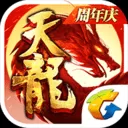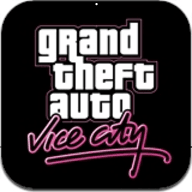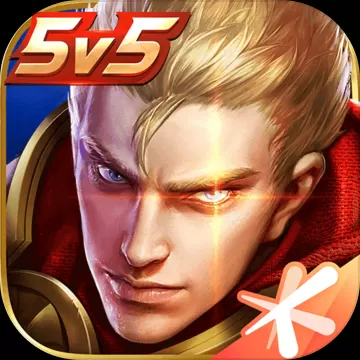Vue与微信小程序的区别与比较分析
写完vue项目和小程序,发现两者有很多相似之处,在这里总结一下它们的异同。
一、生命周期
先粘贴两张图片:
Vue生命周期

小程序生命周期

相比之下,小程序的钩子函数要简单得多。
当vue的hook函数跳转到一个新的页面时,会触发hook函数,但是小程序的hook函数和页面的不同跳转方式会触发不同的hook。加载:页面加载
一个页面只能被调用一次,可以获取调用的查询参数,在onLoad中打开当前页面。
显示:页面显示
每次打开页面时调用。
OnReady:页面是第一次呈现
一个页面只会被调用一次,这意味着该页面已经准备好与视图层交互。
在onReady之后设置接口,如wx.setNavigationBarTitle。详见生命周期。
在侧:页面隐藏
当导航到或底部选项卡切换时调用。
卸载:页面卸载
当重定向到或导航回时调用。
数据请求
当页面加载和请求数据时,钩子的使用有些类似。vue通常在创建或装载的程序中请求数据,而在小程序中,它在onLoad或onShow中请求数据。
二、数据绑定
Vue:当Vue将变量的值动态绑定到元素的属性时,变量的前面会添加一个冒号:例如:
img : src=' Http : img src '/applet:将变量值绑定为元素属性时,会用两个大括号括起来。如果没有添加括号,它将被视为字符串。示例:
image src=' http : { { img src } } '/image iii。列表呈现
直接粘贴代码,两者还是有些相似的:
vue:
ul id=' example-1 ' Li v-for=' items“{ items。message } }/Li/ul varexample 1=new vue({ El : ' # example-1 ',data : { items :[{ message : ' foo ' },
page({ data : { items :[{ message : ' foo ' },{ message : ' bar ' }]})text wx : for=' { { items } } ' { { item } }/text IV。显示和隐藏元素
在vue中,v-if和v-show用于控制元素的显示和隐藏。
在小程序中,wx-if和hidden用于控制元素的显示和隐藏。
动词(verb的缩写)事故处理
Vue:使用on:event绑定事件,或者使用@event绑定事件,例如:
按钮v-: click=' counter=1 ' add 1/按钮按钮v-: click。stop=' counter=1 ' add 1/button//在事件冒泡防止小程序中,所有事件都由bindtap(绑定事件)或catchtap(catch事件)绑定,例如:
Button bindtap=' noWork '明天不上班/button button catch tap=' now work '明天不上班/button //防止事件冒泡
第六,数据双向绑定
1.给定值
在vue中,您只需要将v-model添加到表单元素中,然后在数据中绑定一个对应的值。当表单元素的内容改变时,数据中对应的值也会随之改变,这是vue非常好的一点。
Div id=' app '输入v-model=' reason '占位符='填写reason ' class=' reason '//div new vue({ El : ' # app ',data: {reason3360''}),但在小程序中,它没有这个功能。那我们该怎么办?
当表单内容发生变化时,会触发表单元素上的绑定方法,然后在这个方法中,表单上的值会通过this.setData({key:value})赋给数据中对应的值。
这是代码,你可以感觉到:
输入bindinput='绑定原因'占位符='填写原因'类='原因'值=' { {原因}} '名称='原因'/页({data: {reason3360''},绑定原因(e) {this。setdata ({reason:e。细节。value})})当页面表单元素较多时,更改值是一项体力活动。与第一个小程序相比,vue的v-model简直酷毙了,没有必要。
2.价值获取
在vue中,通过这个获取值。
在小程序中,通过this.data.reason获取值
七、绑定事件传递参数
在vue中,通过绑定事件传递参数是相当简单的,在触发事件的方法中只需要将数据作为形式参数传递即可,例如:
Button @click='say('明天不上班')'/button newvue ({el:' # app ',methods : { say(arg){ agree })。log (arg)}})在小程序中,不能在绑定事件的方法中直接传入参数,需要将参数作为属性值。绑定到元素上的data- attribute,然后通过方法中的e.currentTarget.dataset.*获取,从而完成参数的传递。很麻烦吗.
view class=' tr ' bind tap=' to approve ' data-id=' { { item . id } } '/viewPage({ data : { reason : ' ' }),to approve(e){ let id=e . CurrentTarget . dataset . id;}})八。父子组件通信
1.子组件的使用
在vue中,您需要:
1.写入子组件
2.导入要使用的父组件
3.在vue的组件中注册
4、用于模板
//子组件bar . vuetemplate div class=' search-box ' div @ click=' say ' : title=' title ' class=' icon-miss '/div/div/Templestexport默认{ props : { title : { type : string,默认值:''}},方法: {say () {console.log('明天不上班');这个。$ emit(' hello world ')} }/script//父组件foo . vuetemplate div class=' container ' bar : title=' title ' @ hello world=' hello world '/bar/div/Templestimport bar from '。/Bar . vue ' export default { data : { title : '我是标题' },methods : { hello world(){ console . log('我收到了子组件传递的事件')}},components 3360 { Bar }/script in small
1.写入子组件
2.在子组件的json文件中,将该文件声明为组件
{'component': true}3。在要导入的父组件的json文件中,在usingComponents中填写导入组件的组件名和路径
使用组件“: {”标签栏“:”././components/tabbar/tabbar'} 4。在父组件中,可以直接引入
Tab-bar当前页面=“索引”/tab-bar特定代码:
//子组件!-components/tabBar/tabBar . wxml-view class=' tabbbar-wrapper ' view class=' left-bar { { current page==' index '?'active ' : ' ' } } ' bind tap=' jumptoindex ' text class=' icon font icon-shoye '/text view主页/view/view class=' right-bar { {当前页面==' setting '?'active ' : ' ' } } ' bind tap=' jump setting ' text class=' icon font icon-shezhi '/textview setting/view/view 2,父组件和子组件之间的通信
在vue,
当父组件向子组件传输数据时,只需要通过v-bind在子组件中传递一个值,在子组件中,通过props接收即可完成数据传输。示例:
//父组件foo . vuetemplate div class=' container ' bar : title=' title '/bar/div/templatestimport bar from '。/Bar。vue ' export default { data : { title : ' I is the title ' },components 3360 { Bar }/script//subcomponent Bar . vuetemplate div class=' search-box ' div : title=' title '/div/Templestexportdefault { props 3360 { title : { type : string,default 3360 ' ' }/script子组件和父组件可以通过此进行相互通信。$emit
在小程序中
父组件和子组件之间的通信类似于vue,但是applet不传递v-bind,而是直接给变量赋值,如下所示:
TAB-bar当前页面=' index'/TAB-bar这里,“index”是要传递给子组件的值。在子组件属性中,接收传递的值。
properties : {//popup title current page : {//attribute name type : String,//type(必选),当前接受的类型包括:String、number、boolean、object、array、Null(对于任何类型)value : ' index '//attribute的初始值(可选)。如果没有指定,将根据类型选择一个}}子组件与父组件通信,类似于vue。代码如下:
//子组件中的methods : {//传递给父组件cancelbut 3360 function(e){ var=this;var myeventdetail={ picker show : false,type:' cancel'}//detail对象为此事件侦听器函数提供。triggerevent ('myevent ',myeventdetail)//myevent自定义名称事件。父组件使用}、}//barbind : myevent=' togglestoast '/bar//来获取子组件信息togglestoast(e){ console . log(e . detail)}如果父组件想要调用子组件的方法,
Vue会给一个子组件添加一个ref属性,它可以通过这个的值获得。$refs.ref,然后可以调用子组件中的任何方法,例如:
//子组件bar ref='bar'/bar//父组件this。$ ref . bar . subcomponent的方法小程序是给subcomponent添加id或类,然后通过这个找到subcomponent . selectcomponent,然后调用subcomponent的方法。示例:
//子组件bar id='bar'/bar//父组件this。selectcomponent ('# id ')。syahelo()小程序在这方面与vue过于相似。
摘要
以上就是Vue和边肖介绍的微信小程序的区别和比较。希望对大家有帮助。如果你有任何问题,请给我留言,边肖会及时回复你。非常感谢您对我们网站的支持!
版权声明:Vue与微信小程序的区别与比较分析是由宝哥软件园云端程序自动收集整理而来。如果本文侵犯了你的权益,请联系本站底部QQ或者邮箱删除。

















